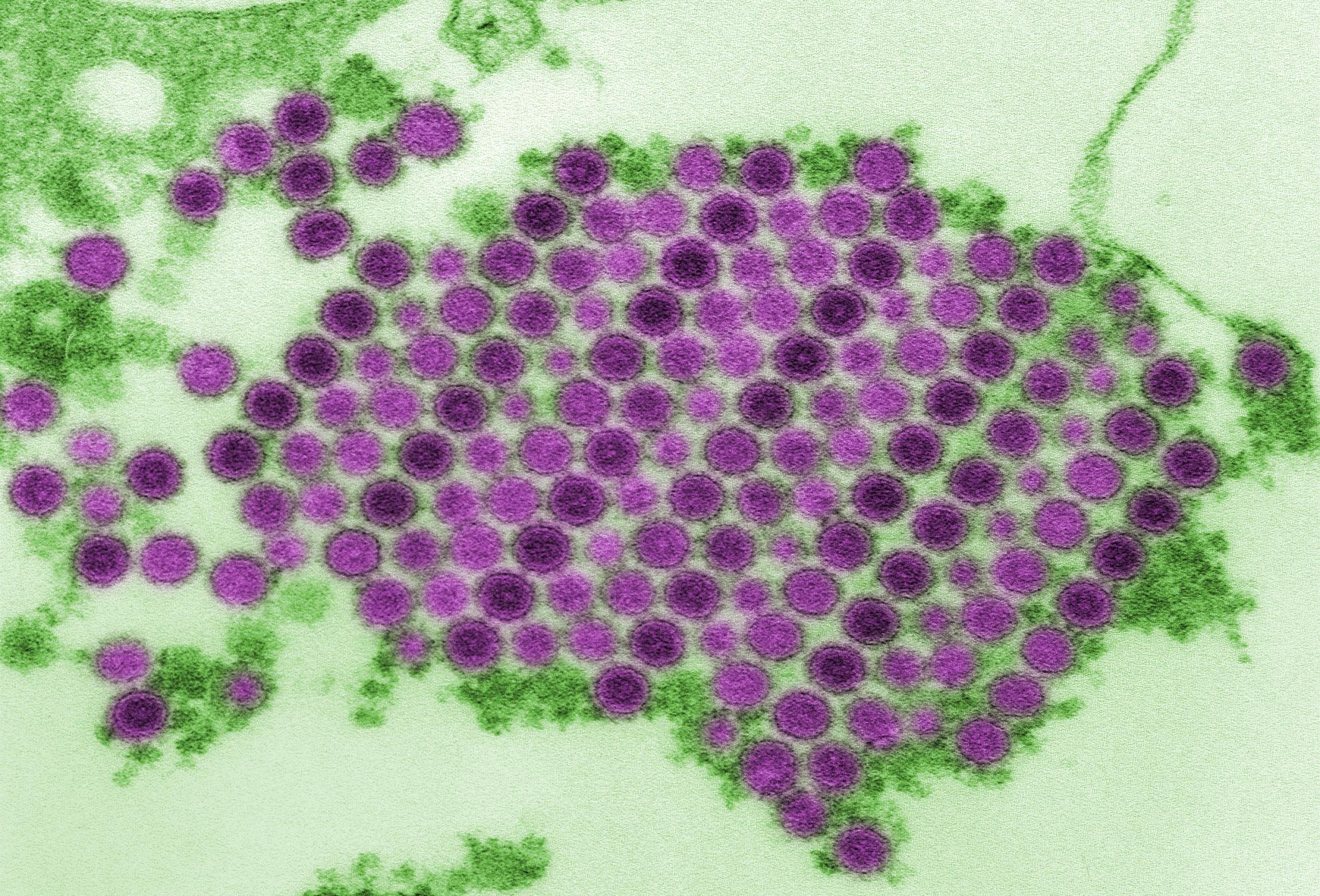Chikungunya virus (CHIKV) can infect humans and is primarily transmitted by mosquitoes, specifically Aedes aegypti and Aedes albopictus.
The virus can also be transmitted from mother to child during pregnancy or birth. Natural reservoirs of the virus include monkeys, birds, cattle, and rodents.
Since 2004, the disease has occurred in outbreaks in Asia, Europe and the Americas.
Clinical signs
In humans, CHIKV initially causes fever that usually lasts two to seven days, and is characterised by severe joint pains that last weeks or months, sometimes even years.
Clinical signs:
- Sudden fever
- Joint pains (arthralgia)
- Vomiting
- Nausea
- Headache
- Rash characterised by raised, spotted lesions
Virology
Because it is mainly transmitted by mosquitoes, which are arthropods, CHIKV can be referred to as an arbovirus (arthropod-borne virus).
CHIKV is a member of the Togaviridae family of viruses, in the alphavirus genus. It is an enveloped virus which carries a single stranded RNA genome within its capsid.
Pirbright's research on chikungunya virus
Since 2006 a chikungunya epidemic has caused millions of cases of arthralgia in the islands of the Indian Ocean, the Indian subcontinent and South East Asia.
Studies at the Institute are in progress to investigate the mechanisms by which CHIKV persists and causes disease, in particular the development of arthralgia.
Much of this work is part of an EU (FP7) programme, Integrated Research on Chikungunya which involves many international partner laboratories.

